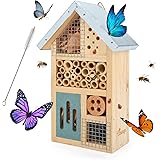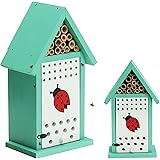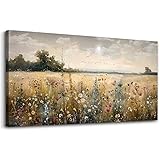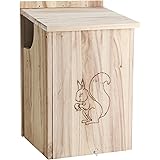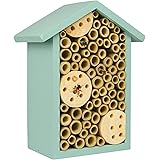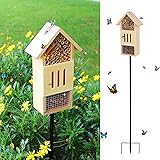Ladybugs have pretty, brightly colored spots. They are not just a pretty face, however; these beetles are very useful to gardeners and farmers. They are predatory, eating aphids and other insects that can damage plants.
They also help control scale insects, which can be destructive to gardens. Ladybugs are also good pollinators.
If you want to encourage them in your garden, plant flowers that they like. They prefer to pollinate yellow, purple, and pink flowers.
The best way to learn about something is to watch it. Scientists do this a lot, especially when studying insects. In this project you’ll get to act a bit like a scientist by watching and learning about ladybugs.
Before you start, ask an adult to help you find a glass jar. Put some water in the jar to keep it from overflowing. Ask your parent or teacher to help you make sure the lid has air holes in it, too. Then, set out to look for ladybugs!
While you’re looking for ladybugs, be careful not to confuse them with Asian beetles. These beetles are imported from other countries to control crop-destroying pests, but they have become a nuisance in many areas where they are not welcome. They may not harm you, but they can stain walls and fabrics, and they might bite people who are allergic to them. If you think you have a ladybug, check its body to see whether it has the characteristic black spots on its pronotum (on the back of the head) and wing covers, or elytra.
Ladybugs can be almost any color except white, gray, or all black, but they are usually a pretty red. Their rounded, compound eyes can see in most directions at once, thanks to hundreds of tiny lenses inside each eye. The antennae can sense odors and vibrations, too. They have chewing mouthparts to eat their prey, and they can release a foul-smelling liquid from their legs if they are threatened or attacked. These chemicals can deter predators from trying to eat them, and they also make it unpleasant for the predator to touch the ladybug with its legs.


